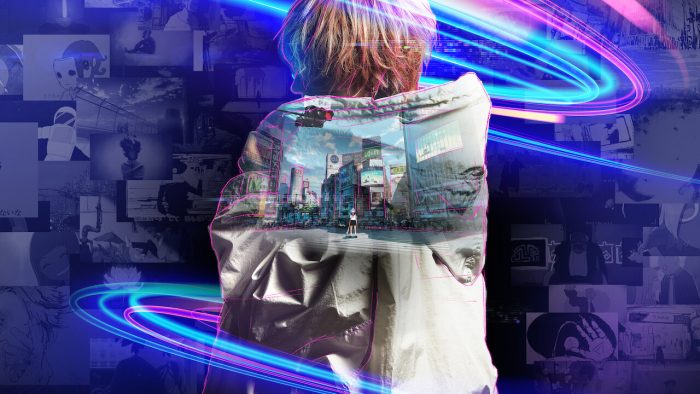
Anime is an art form like any other. Just as art has its canonical structures, anime has the quintessential tropes of classic Shounen and Shoujo. Just as connoisseurs and laymen alike know of the Mona Lisa or Starry Night, they know of Pokémon and Sailor Moon. And just as every art form has its outliers and oddball experiments, anime too has its own off-beat explorations.
From mind-melding shows like Sonny Boy where you don’t know which way is up (literally), to The Tatami Galaxy’s existential nightmarish crises, to Mononoke where you can’t tell if you’re looking at a painting, a collage, or a horror anime, there’s a whole other side to the genre that steps away from the constraints of traditional storytelling and conventional artistic approaches. And somewhere on the spectrum between the beginnings of linear storytelling’s disintegration and pure experimental art, one can pinpoint Adam by EVE: A Live in Animation, a short which can be summed up in one word: overwhelming. A fever dream that devolves into a vortex of pop-rock sounds, 2D digital animation, and some pretty poignant monologuing, Adam by EVE throws the viewer every which way through a never-ending onslaught on the senses, with no option but surrender. While navigating this short is nigh impossible in one shot, it seems a little less herculean to do so piece by piece.
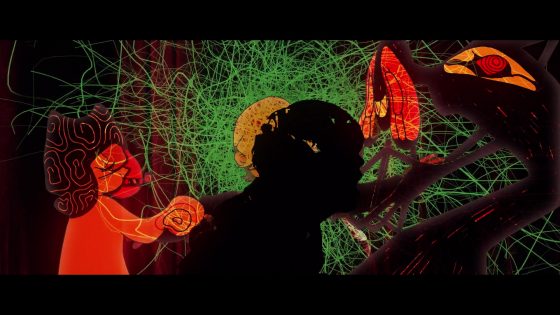
!!SPOILERS AHEAD!!
The Who What Why
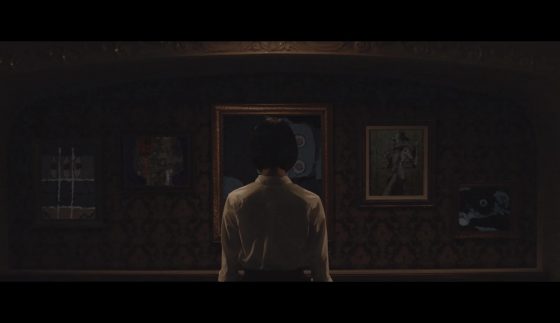
Surreal, enigmatic, and vibrant, Adam by EVE is an experiment in audio-visual storytelling. It blends live-action cinematography with 2D digital animation through rough cuts and overlays, creating a collage-like aesthetic. The 58-minute short tells us the story of two girls in live-action, Aki and Taki. While telling Aki about a recurring nightmare with a one-eyed man, Taki simply vanishes. What follows is Aki’s pursuit of her missing friend across a fantastical hybrid landscape, where real Tokyo meets fictional Shibuya, where the edges of reality and a dreamworld blur together, where live-action and animation blend together; all complemented with Eve’s (stylised E ve) discography, which makes it all the grander, all the more lyrical, and all the more riveting.
Eve, Who?
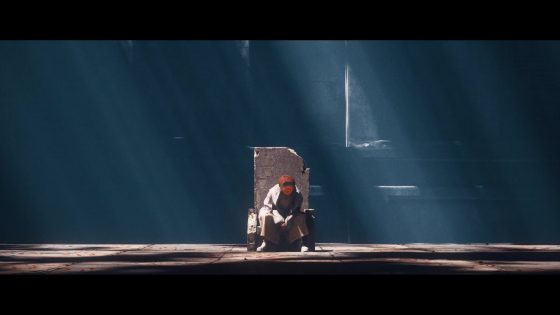
Eve (stylised E ve) is a Japanese singer and songwriter, most recently known amongst anime fans as the composer of hit shounen anime Jujutsu Kaisen’s theme song, “Kaikai Kitan”. Eve officially debuted on Niconico in 2019 and has since continuously created vibrant and electrifying pop-rock compositions usually accompanied by animated videos. By layering his distinctive voice over a multitude of instruments and stereo effects, his music has a sort of electric dynamism that, when coupled with moments of prudent silence, makes his music videos an impactful cinematic experience unique to his own aesthetic.
This creative identity can best be observed through his discography. Eve has built both audio and visual connections across his catalogue of songs by touching upon similar themes in his lyrics, universal motifs in his music, visual cues, and most important, narratives. Eve’s music videos are populated with a recurring cast of animated characters, including his own concealed persona, whose stories can be followed across multiple songs. In fact, a few of his videos, such as Outsider and Dramaturgy, are directed sequels of previous compositions, which add another dimension of complexity and linearity to an already concept-rich discography.
Furthermore, with the emergence of these identities across the span of his work, not to mention his heavy focus on their character such that their significance is on par with the sound itself, it was natural for Eve to bring his narrative multiverse into a more cohesive format with his manga, Kara no Kioku. Thus, Adam by EVE: A Live in Animation is the natural progression for the artist beyond his previous body of work. It is the inevitable expansion and exploration of his world, its denizens, and their intricate relationships.
A Sound Bath in Animation Nation
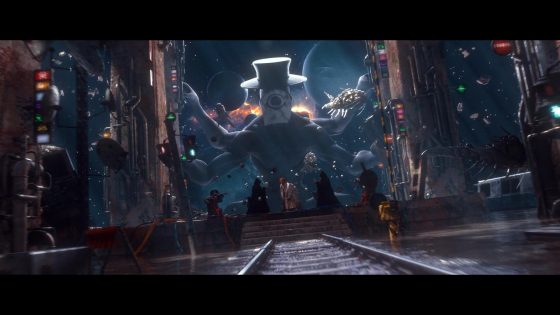
Adam by EVE, while a narrative short in its own right, is essentially an extended music video spotlighting Eve’s impressive discography. The hybrid short has a magnificent soundscape that employs both Eve’s old and new work. The line between the two is drawn through their portrayal. The older, previously animated catalogue is given new life as it accompanied the hybrid sequences following Aki and Taki, while newer music is fully illustrated through over-the-top, highly conceptual animation.
Throughout Eve’s discography, die-hard fans are sure to have noticed a cast of recurring characters such as Hitotsume (One Eye) Tobi Otogiri, and Noppo. These characters once again find themselves front (and slightly off-centre) as Aki races through the multi(media)verse of Eve’s creation. The overlaid footage of Eve’s performances with the live shots of Aki and Taki’s stories, the interplay of sketchy, abstract animation haunting the edges of the screen, the 2D animation bleeding into the background gaps of the live shots all slowly grow and build on one another until they culminate in a crescendo where the 2D animation finally swallows the live footage and Aki whole in a vibrant tsunami of action, choreography, and sound.
And of course, who could forget the spunky, energetic end sequence of the film? Completely unrelated to the saga of Aki and Taki, the very last song, the ending theme of this short, while a little out of place, is electric, trippy, and entirely 2D animated as well. From character transformations to fish-eye camera angles, it’s quite a treat for those who made it all the way to the end.
The Nitty-Gritties
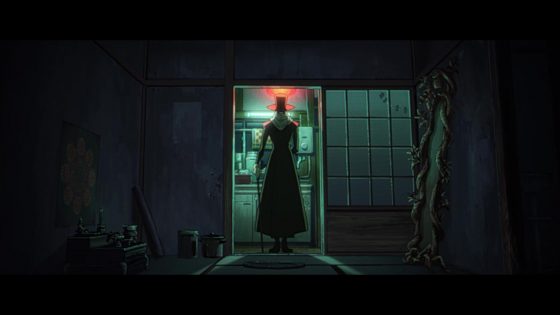
In the past, Eve’s work has referenced uncomfortable topics such as anxiety, constraints within the mind, and societal pressure. The objective when touching upon these scenarios is the race toward freedom across a myriad of mindscapes, landscapes, and soundscapes, stretching across reality and abstraction alike. Adam by EVE illustrates this beautifully. While pursuing Taki, Aki faces the sinister Hitotsume as she runs across the city and apparently her subconscious itself, while the story ebbs and flows between dream and reality. Eve uses this chase to illustrate the very themes that have continuously been expressed through his work— anxiety, society, consumerism, conformity, and isolation.
In this short, he seems to touch upon more unsavoury ideas such as voyeurism through Hitotsume’s design and character, society’s objectification of younger women through their portrayal in media, as can be observed through the dream sequence with the sailor style uniforms, and even the breaking point through which these circumstances are overcome, as Hitotsume is seemingly defeated when the story breaks away from the 2D animation back to live-action and reality.
While the ending does seem to bow-tie the story quite nicely, with the whole metaphysical nightmarish encounter being a dream and product of Aki’s subconscious, it does feel out-of-place in this context. With the entire production being so out there in terms of art, direction, and story, it’s almost comical that it was all “just a dream.” In fact, this conclusion directly negates any urgency, severity, and thrill it has so far built. However, given that Eve’s work is fairly loaded with double-meanings and symbolism, Adam by EVE definitely makes room for alternative, less boring endings. While on the surface Aki and Taki are joyfully reunited in reality with the rest being reduced to an already fading dream, there is an argument to be made for other interpretations.
For example, did Taki really disappear forever, and is this entire exercise a non-linear narrative exploring grief and loss as Aki deals with the tragedy of losing her only close friend? Is it an exploration of the ideal self vs the reality of the self where Taki represents the ideal that Aki wants to become but struggles to? Is it touching upon a less-platonic, more-romantic relationship against a metaphor for fear of allowing such emotions to develop? Or is it really a simple story about friendship? There are so many ways to take this, and the beauty of experimental storytelling is that they’re all on equal footing.
Too Much, Too Little
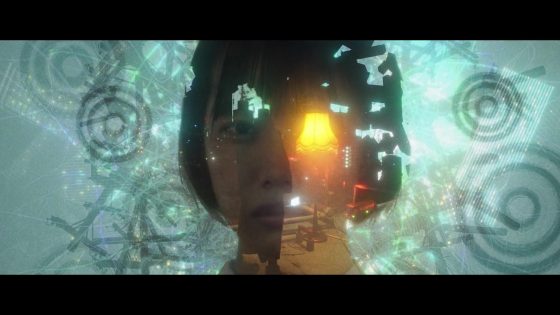
While it is certainly a feast for the eyes and ears, and will definitely satisfy Eve fans with all the motifs and symbology from across his discography, Adam by EVE may not be everyone’s cup of tea. It’s confusing, to say the least, especially for someone unfamiliar with Eve’s musical catalogue. However, the animation is absolutely stunning. While blending live-action and animation is often a double-edged sword, Adam by EVE has more than proven that when done well, it’s show-stopping. From the overlaid footage to the live-action choreographed sequences to the animated motifs embedded into the live backgrounds, to the climactic entirely animated sequence, this short is a rollercoaster in terms of visuals, and while it is entirely overwhelming, it’s still so worth it.
Furthermore, it effectively showcases Eve’s discography which leaves quite an impression when complemented with the visuals. However, if one is searching for a meaningful, complex plot, this hybrid anime leaves a lot to be desired. Eve fans can appreciate this film in a way laymen cannot, given the many, many, many callbacks to the artist’s previous creative endeavours. As a standalone the story is weak, given how interpretively it’s structured, not to mention its disappointingly derivative ending (at least on the surface) which in some ways undercuts the artistic integrity of experimental videography by running back to common tropes after expending so much time and effort in leaning away from traditional forms.
However, we recommend watching it, not for the story, but simply for its masterful execution and dynamic soundtrack. In terms of execution, Adam by EVE deserves appreciation and recognition— for Hanon’s fantastic acting as Aki, for its electronic music, for its graphics, and most importantly, for its direction. We only wish it had a more well-conceived storyline and that it was perhaps more accessible for the general populace rather than simply those intimately familiar with Eve’s artistry. Honestly, don’t watch Adam by EVE, rather let yourself experience it, it’s so much more satisfying that way.
Final Thoughts
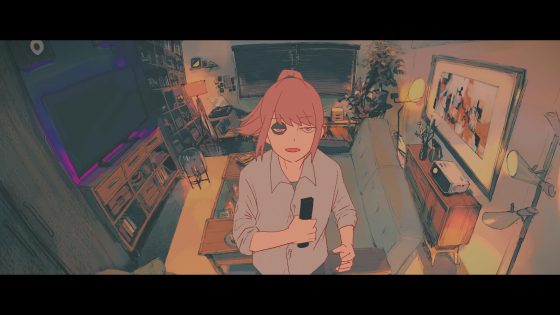
Adam by EVE: A Live in Animation is an overwhelming experience anyone who adores anime and animation as a medium should experience. Even if the vast majority of its themes and story fly way over one’s head. It’s a meditation and reflection on a close relationship juxtaposed with throbbing, vibrant visuals and sounds. Splendid, uncanny, and with animation and direction that is just that good, this film will stay with the viewer long after the 58 minutes have passed.
How did you interpret Adam by EVE? What rendition did you most enjoy? Did you love it or hate it? Do you Eve fans think our takes are way off-base? Let us know in the comments below!

